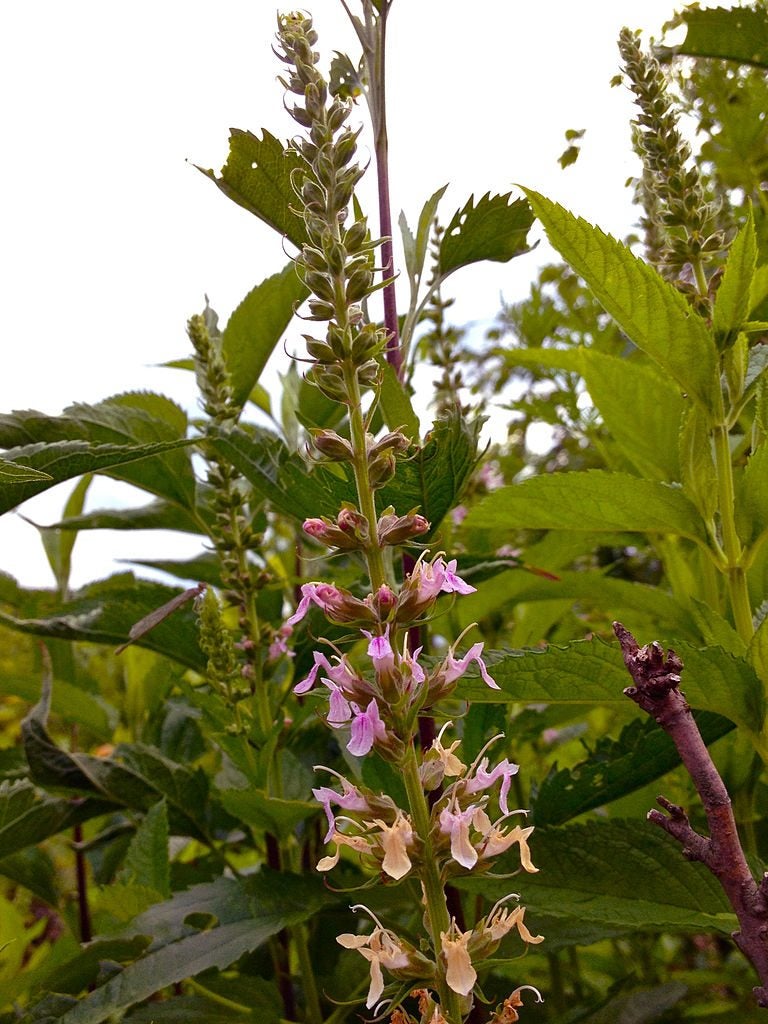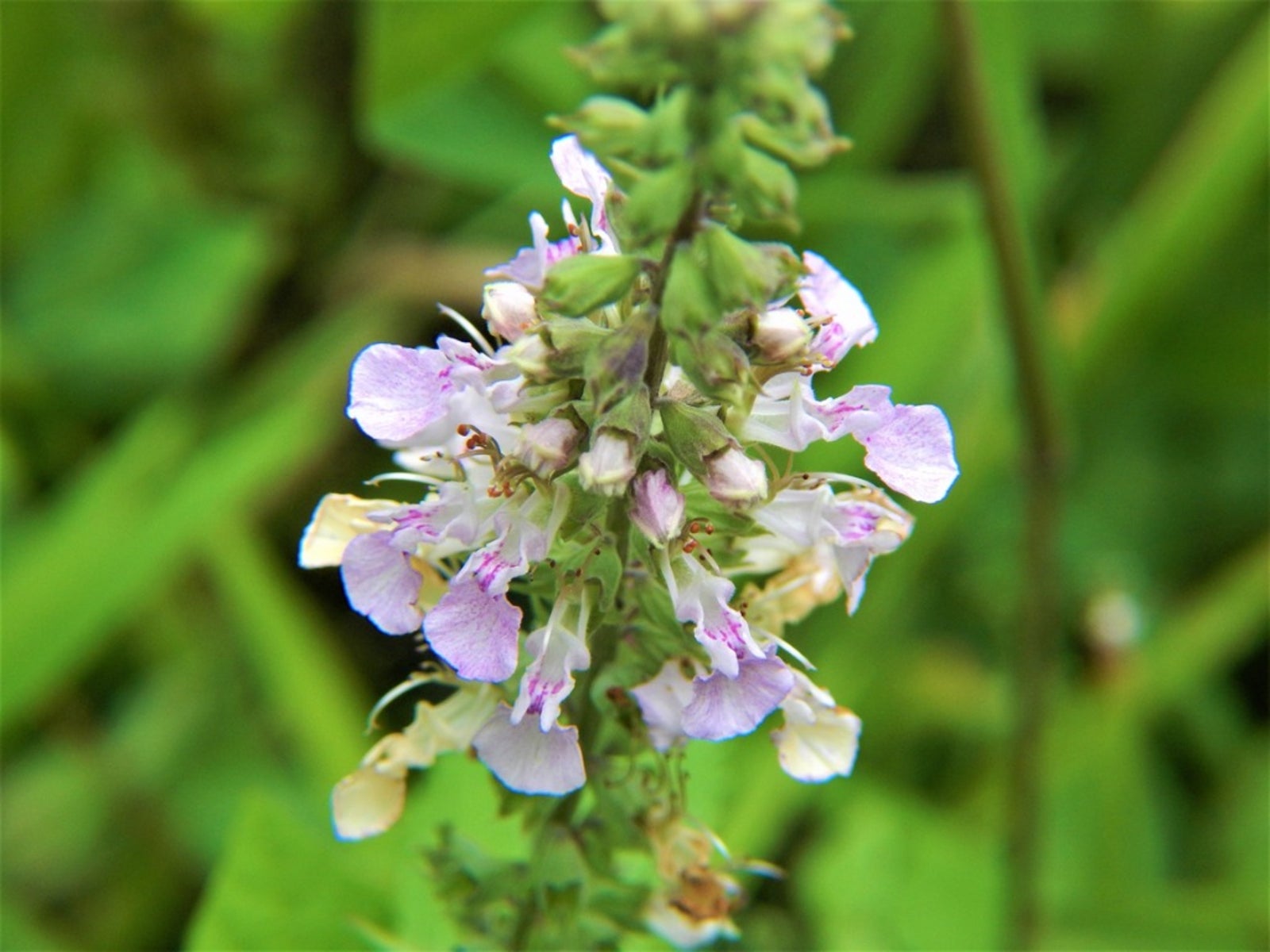Wood Sage Wildflowers: Growing Germander Wood Sage Plants

There is a large genus of evergreen shrubs and sub-shrubs known as Teucrium, whose members are low-maintenance. Members of the Lamiaceae or mint family, which also includes lavender and salvia, wood sage plants, also referred to as American germander, are one such member. So, what other info about wood sage can we uncover and how to grow American germander?
Info about Wood Sage
Wood sage (Teucrium canadense) goes by many other names too, including Canadian germander, germander wood sage and wood sage wildflower. This germander is a perennial herb native to many areas of North America. Wood sage plants form a low-creeping groundcover that is native to the United States. Growing germander wood sage can often be found in shaded to partially shaded, moist areas such as along stream banks, lake shores, marshes, prairies, ditches, and pastures. Wood sage wildflowers bloom pinkish purple in the spring through late summer from 4-inch (10 cm.) tufts of soft, green leaves with fluted or ruffled edges. Blossoms are about a foot (30.5 cm.) in height and are majestic swaying atop a sea of foliage. The flowers make lovely additions to cut flower arrangements. The plant spreads rapaciously along rhizomes. Perfect for covering less than habitable areas of the property, but otherwise must be kept in check. Wood sage was also once used to flavor beer before hops became in vogue.
How to Grow American Germander
Wood sage wildflowers are low-maintenance, easy-to-grow native plants. They prefer areas with more moisture or shallow, submerged soils. They are tolerant of a variety of soil, from sandy, loam, clay, limestone, and combinations thereof, although they prefer fertile, loamy soil. Although American germander can tolerate poorly drained conditions, it cannot tolerate drought. Once established, growing germander wood sage really only needs consistent moisture. As mentioned, it will aggressively spread, so either plant it in an area that you wish to be filled in or be prepared to be aggressive yourself to retard its spread. It is susceptible to foliar disease but less so than other mint family members, such as bergamot. Plant clumps of wood sage in part shade. American germander is an aromatic great in the perennial garden (if you manage it), or as a lovely carpeting ground cover. Deer find it uninteresting, but wood sage wildflowers are a big hit with the butterflies.
Gardening tips, videos, info and more delivered right to your inbox!
Sign up for the Gardening Know How newsletter today and receive a free copy of our e-book "How to Grow Delicious Tomatoes".

Amy Grant has been gardening for 30 years and writing for 15. A professional chef and caterer, Amy's area of expertise is culinary gardening.
-
 Never Plant Seedlings Until They Pass These 3 Simple Tests
Never Plant Seedlings Until They Pass These 3 Simple TestsDon't be over-eager to transplant seedlings into the garden before they are ready. These quick and easy checks will help ensure flourishing plants.
By Mary Ellen Ellis
-
 Grow ‘Karl Rosenfield’ Peony Plants For The Ultimate Frilly Border Beauties And Cut Flowers
Grow ‘Karl Rosenfield’ Peony Plants For The Ultimate Frilly Border Beauties And Cut FlowersFor frilly double magenta peony petals infused with a heady fragrance, grow ‘Karl Rosenfield’ peony plants. Here’s how to cultivate the ultimate plushy blooms
By Tonya Barnett
